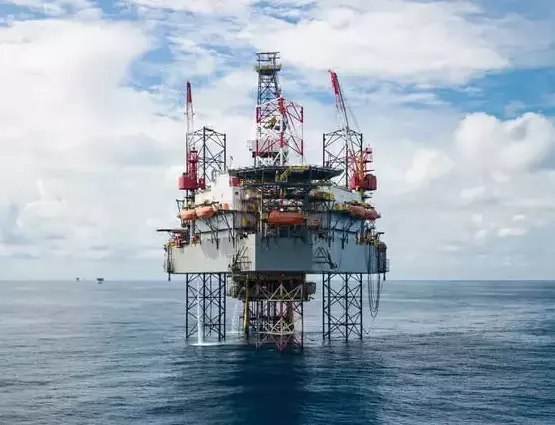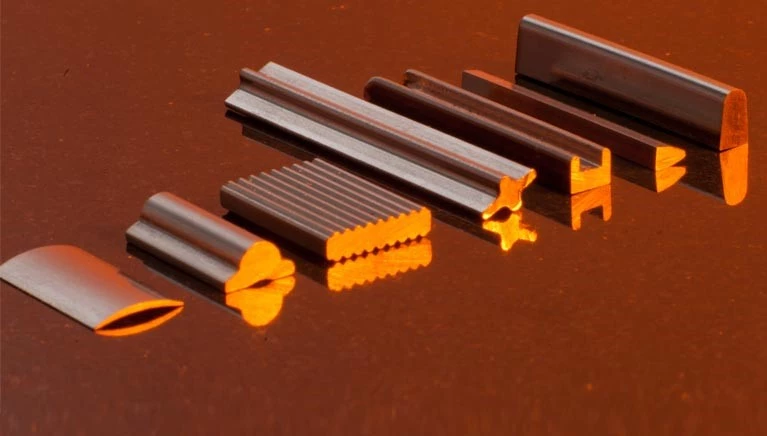Monel Alloy Deep Dive: Comparing Monel Alloys for Use in Down-Hole and Marine Applications.
In 1901, Robert Crooks Stanley invented the first Monel alloy by combining nickel and copper. Since then, Monel alloys have been used for a wide range of purposes including offshore and marine applications. With offshore oil and gas production progressively moving into deeper parts of the ocean, there is a demand for strong, corrosion resistant materials that can withstand the extreme conditions of underwater environments.
Monel alloys are a prime material for offshore drilling and marine applications due to their excellent corrosion resistance and good ductility; they can also withstand exposure to acids and alkalis. Compared to other alloys, like stainless steel, Monel alloys demonstrate a superior resistance to elevated temperatures and stress cracking under pressure. Although there are many types of Monel available, Monel 400, Monel 404, and Monel K-500 are better suited for these applications.
Monel alloys are used in oil and gas exploration where components will be exposed to “down hole” environments of elevated temperature combined with high hydrogen sulfide concentrations. Monel is used in these so called “sour wells” as the conditions prove rapidly degrading to stainless steels.

Monel 400
Considered a puritan alloy, Monel 400 offers many advantages compared to other alloys. It has excellent corrosion resistance to seawater and steam at temperatures of up to 1,000ºF. It also exhibits a resistance to sulfuric and hydrofluoric acids, along with good weldability and moderate to high strength. However, this alloy does have its limits as it cannot be hot worked.
Chemical composition
On average, Monel 400 contains at least 63 percent nickel, 28 to 34 percent copper, and no more than 2 percent of manganese. It also has trace amounts of silicon, iron, carbon, and sulfur. While nickel contributes to the strength and corrosion resistance of Monel 400, copper increases its ductility and electrical conductivity.
Marine and offshore applications
Monel 400 tends to be the most popular type of alloy for underwater applications. Recently, the presence of hydrofluoric acid in seawater has been steadily increasing,

which has created a need for materials that can withstand the effect of acidic corrosion. Underwater volcanoes also release hydrofluoric acid during eruptions. Monel 400 is a good fit in waters with high concentrations of hydrofluoric acid.
Oher marine applications of Monel 400 include piping systems, seawater valves, trolling wire, and strainer baskets. It is also used in the production of piping and cladding for oil refinery columns and in the legs and risers of offshore platforms. It is imperative to use strong materials in the construction of these platforms as they can be submerged up to two miles deep into seawater.
Monel 404
One attribute that distinguishes Monel 404 from other alloys is its ability to provide an incredibly low Curie temperature. It also has low permeability and superior brazing characteristics.
Monel 404 can be machined and formed using conventional techniques and has good weldability. It can be cold rolled to various tempers; however, it cannot be hot worked or forged.
Chemical composition
Monel 404 contains less nickel than other types of Monel alloys. The presence of nickel ranges between 52 to 57 percent. The remainder of its chemical composition is between 42 to 47 percent copper, along with small percentages of manganese, iron, silicon, and aluminum.
Marine and offshore applications
Generally, Monel 404 is used in the production of electronic components, such as ceramic-metal seals and transistor parts. However, Monel 404 can also be used in the construction of various boat parts and marine fixtures, such as hot water heaters, gas tanks, and pumps.
Monel K-500
Monel K-500 was developed during the 1920s and exhibits many of the same characteristics as Monel 400. However, it is chemically enhanced to provide higher corrosion resistance, and can be precipitation hardened to achieve higher tensile strength and hardness. It is resistant degradation at elevated temperatures up to 1,112ºF. Additionally, Monel K-500 can be hot worked in temperatures between 1600–2100°F.
Chemical composition
The presence of titanium and aluminum contributes to the increased strength of Monel K-500. Typically, it has at least 63 percent nickel and 27 to 33 percent copper. Titanium, iron, aluminum, phosphorous, sulfur, silicon, manganese, and carbon make up the rest of its chemical composition.
Marine and offshore applications
Along with elevated temperature resistance, Monel K-500 exhibits excellent mechanical properties in sub-temperatures. Due to a lack of sunlight, deep sea water can be very cold, which makes this alloy excellent for parts that will reach depths of two hundred meters or greater.
Monel K-500 is used for creating both marine and submarine parts, such as blades, pumping shafts, and seawater valves. It is often used in the production of centrifugal pumps due to its high strength and excellent corrosion resistance. As a non-magnetic alloy, Monel K-500 is used for anchor cable on minesweepers as well.
Other considerations for using Monel
Depending on the manufacturer, Monel can come in a variety of forms. Companies can purchase Monel in either hot-or cold-rolled sheets, strips, plates, tubes, rods, and bars. However, when it comes to machining, there are benefits to using shaped wire.
Manufacturers may also factor in aspects of application and environment when selecting which type of Monel to use. In addition to grade, there are different price points to consider. Moreover, certain grades of Monel are more likely to wear from galvanic corrosion.

Benefits of Shaped Wire
Unlike other forms of metal, shaped wire can contain prerolled features, which enables manufacturers to skip certain steps of the stamping process to achieve a desired shape. For this reason, manufacturers using shaped wire may save time in production and require less specialized machinery.
Moreover, by rolling shaped wire closer to near-net shape, manufacturers can reduce waste and optimize costs on material. Other benefits of shaped wire include tight dimensional tolerance and adaptability to roll into complex shapes. Shaped wire is often used in the production of gaskets and seals, wedge wire, engines, and heat exchangers.
Cost Differences
Although Monel is widely used in marine and oil and gas applications, it can be cost prohibitive compared to other metals. For this reason, Monel is used only in applications where other materials would corrode. Out of all the Monel types, Monel 400 tends to be the costliest alloy to source.
Compared to carbon steel piping, Monel is about three times the price. On average, it costs about four times the cost of pure nickel, and six to eight times more than stainless steel. Moreover, Asia Pacific consumes the highest rates of Monel. As the demand for Monel increases, it’s likely that the price will too.
Galvanic Corrosion
Galvanic corrosion is a chemical reaction that occurs when two different metals come into contact with one another and are simultaneously exposed to a corrosive electrolyte. When exposed, one of the two metals begins to corrode at a much faster rate than if it were on its own. In marine environments, water acts as an electrolyte. As a result, Monel 400 and Monel K-500 can experience galvanic corrosion when in contact with other kinds of metal. Moreover, the intensity of galvanic corrosion is not always easy to predict.
Quality Policy and Sourcing
Monel is a versatile alloy used across many industries, from marine applications to electronics. Regardless of its purpose, sourcing high-quality Monel is essential in the construction of long-lasting parts.
For more than one hundred years, Ulbrich Stainless Steel has been a leader in the production of specialty metals and alloys. Companies can rely on Ulbrich for their high-quality materials and expert knowledge in the field of metallurgy. To find out which type of Monel is best suited for your next project, contact Ulbrich Stainless Steel.


